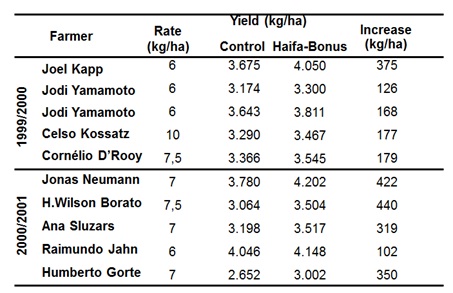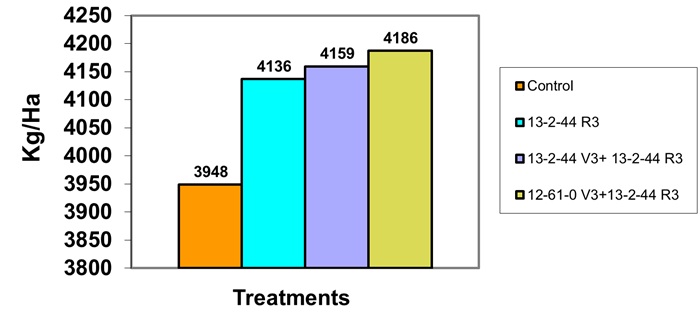Soya fasulyesi gübrelemesi: Daha sağlıklı ve daha yüksek soya fasulyesi verimi elde etmenin en iyi yolu
Foliar fertilization provides potassium nitrate through the leaves, resulting in increased yields. Follow Haifa's recommendation for using soybean fertilizer
Soybean (Glycine max L. Merrill) is one of the most important sources of food and animal feed. The high profitability of soybean attracts a growing number of growers and today is one of the most important plant crops trading in the world and the growing area is increasing annually. Soybean cultivation is concentrated geographically mostly in the USA, Brazil and Argentina, and the big soybean exporters are USA, Brazil, Argentina, Paraguay, Canada, Uruguay and Ukraine.
Foliar nutrition is the practice of applying the fertilizer solution to plant leaves. Foliar nutrition is an effective method for overcoming plant special needs as foliar fertilizers are absorbed right at the site where they are used. This does not mean that the application of foliar fertilizer replaces the soil applied fertilizer, but it increases their uptake and boost plant performance during harsh condition such diseases or soil special conditions (flood, drought, etc.) or at specific physiological stages. When plants are well nourished, they are more resistant to pathogens and plant is able to produce an almost normal yield despite the damage to the nutrient transport system or roots caused by diseases.
Since pods have started growing in soybean, the plant requires large quantities of potassium. Part of the needed potassium can be provided with foliar application, and it can prevent the loss of potassium from the leaves that will affect the photosynthesis and root system. Some scientific articles show that the well-nourished soybean plants increase yields and have reduced incidence and severity of diseases. For that reason, the foliar application of potassium nitrate began to be more and more common practice for soybean growers. Various field trials with Haifa BonusTM as the soybean fertilizer show that the foliar application boosted the soybean plant performance.
Since 1998 Haifa is conducting field trials on foliar fertilization in soybean in Argentina and Brazil. The results of these studies have consistently shown that foliar fertilization increased yield, and the plants were healthier.
Some of the trials results that represent the accumulated experience of Haifa are shown in tables 1 & 2 and in chart 1. Tables 1 & 2 show the results of Haifa's 10 field trials in Brazil and 5 trials in Argentina. In these trials, the yields increased by 3%-19%. Chart 1. shows the relation between different foliar fertilizer formulas and application time to the soybean's yield.
Table 1. Haifa Bonus field trial in Brazil, 2000-2001

Table 2. Haifa Bonus field trials in Argentina, 2000

Chart 1. The relation between different Haifa Bonus formulas and application time to yield of soybean

Based on more than 10 years of experience in foliar fertilization and soybean fertilizers, Haifa's agronomic team conclusions are:
- Soybean responds to NPK and PN foliar fertilizer
- Higher response in non-optimal conditions
- Better response to a low yield cultivar
- Healthier plants, more resistant to pests and diseases
- The soybean plants suffer less stress during drought periods
- At least 5% more pods per plant
- Average weight of the grains: up to 5% heavier
- Up to 15% higher yields
Haifa recommends two foliar applications of Haifa BonusTM 13-2-44 as part of the total fertilization program with soybean fertilizer:
- First spray application at V3 Stage (the last vegetative stage before flowering): 3,0% (3 kg/ha) @100 L/ha
- Second spray application at R3 Stage (Pods with 0,5 to 1,5 cm in the third superior part of the main stem) : 5,0% (5 kg/ha) @ 100 L/ha

Need more information about growing soybeans? You can always return to the soybean fertilizer & soybean crop guide table of contents




